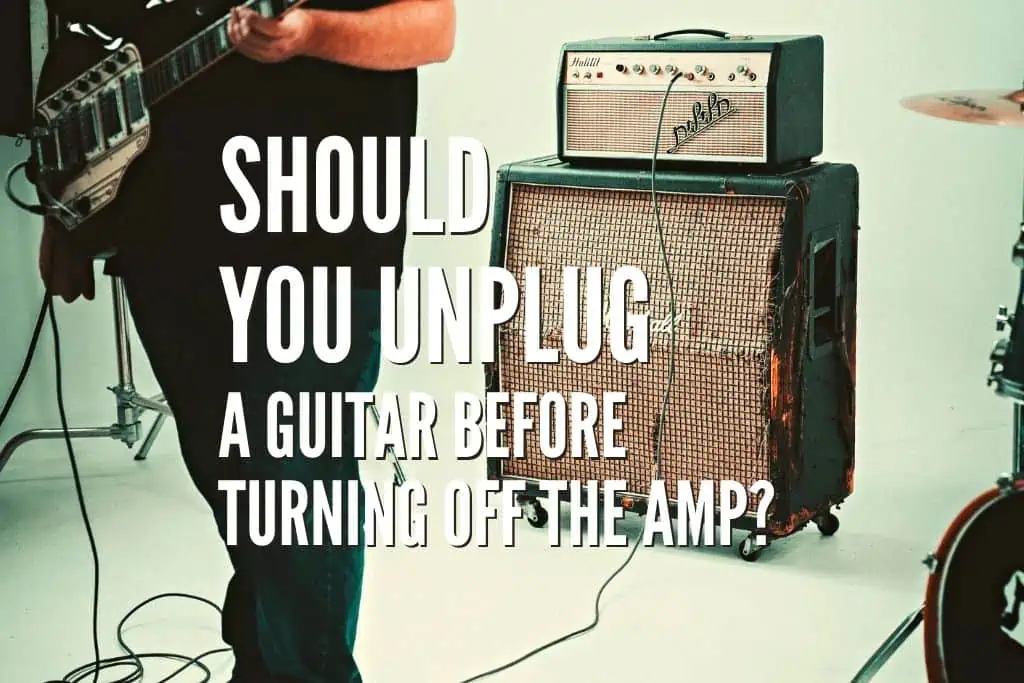Every guitarist, probably at some point in their lives, unplugged their guitar without turning off the amp. As the amp is still sending and receiving electric signals from the pickups, the immediate disconnection causes an unwanted and disturbing loud pop, making guitarists wonder if it harms the gear.
Unplugging a guitar before shutting off the amp is generally safe, but the outcome varies based on the amp type. With tube amps, there’s a risk of a loud pop that can damage the speaker’s voice coil if the guitar is unplugged abruptly. To avoid this, use the standby switch or lower the volume, unplug the jack from the amp, and then disconnect the guitar.
If you are interested in learning more about the healthy unplugging process, potential risks, and precautions to prevent them, keep on reading!
Is It Bad To Unplug Guitar With Amp On?
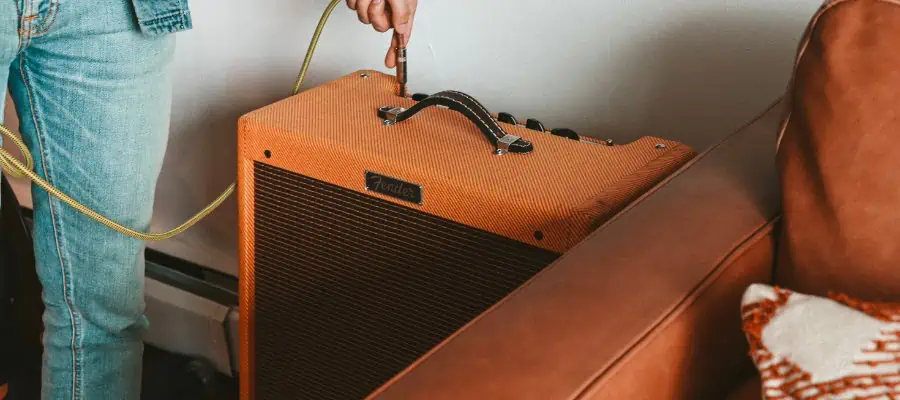
It is generally considered safe to unplug a guitar from an amp while the amp is on. However, it heavily depends on the amp and the technology, so it is better to check the user manual to be sure. Also, to prevent the unwanted noise and pop resulting from unplugging, you can mute or put the amp in standby mode.
That being said, with tube amps, you might have to be careful. Especially in higher volumes, the immediate unplugging of a guitar from the amp, from the guitar’s jack side, can create a loud pop that can misalign the voice coils. This will lead to a constant buzz or unwanted noises.
However, the damage may happen only if the volume is set to very high ranges, as speakers are already built to work with quite high sounds.
Should You Unplug The Guitar Or Amp First?
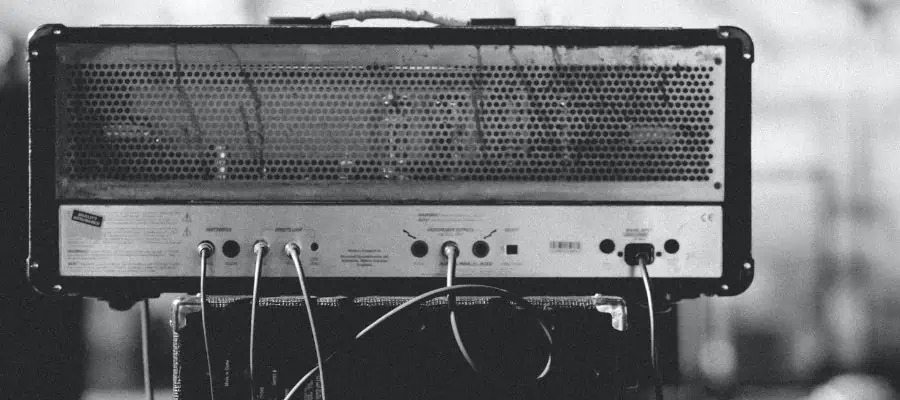
Unplugging the amp is considered the safest way as it cuts the electricity coming from the amp to the pickups, avoiding unwanted noise and potential speaker damage. So, taking the cable out of the amp instead of the guitar while the amp is on is a better idea.
Should I Switch the Amp to Standby To Unplug the Guitar?
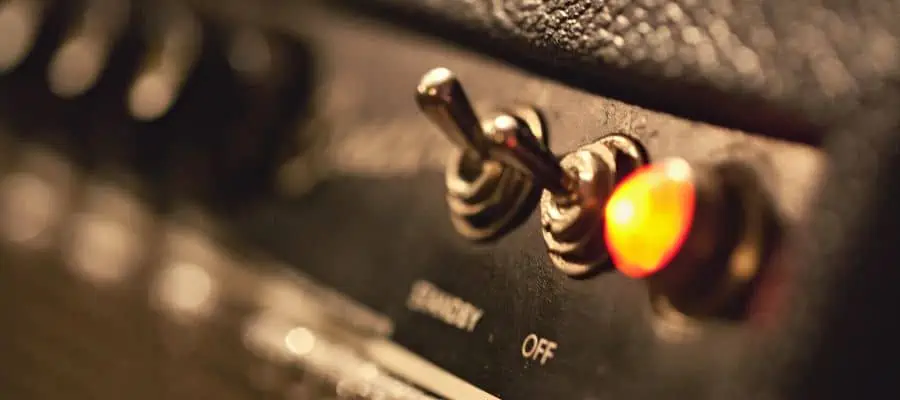
Switching the amp to standby also prevents unwanted noise, cutting the electric signal from the amp coming to the guitar. So, if your amp has a standby mode, feel free to use it.
With the tube amps, it is also a good idea to use the standby mode as it prevents the hit of excessive voltage to the tubes before they are ready and warmed up. When on standby, the only circuits working are the bias and heaters. So, the standby mode warms up the tubes slowly until they are ready to perform without the shock of immediate energy. When turning it off again, you can switch to standby mode for the energy drain to be slower, which prolongs the life of the tubes.
Amplifier: What Actions Should You Avoid?
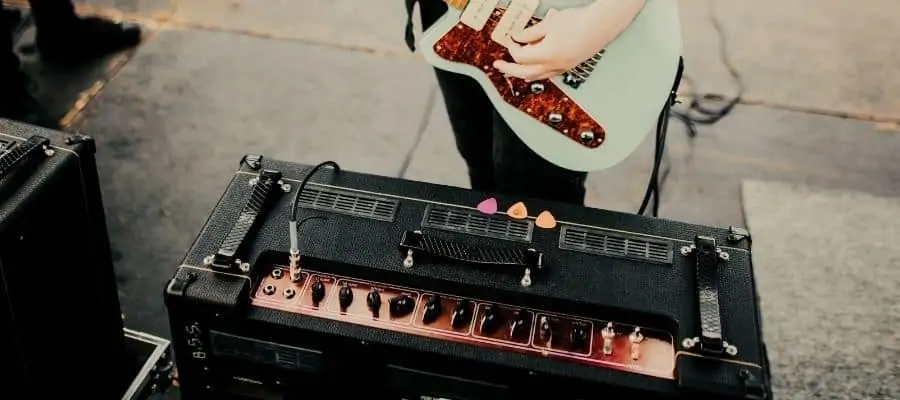
There are some things to be careful with when using any amp. First, you should never use an amp without speakers connected to it. This can lead to significant damage as it will basically shorten the tubes to high voltages, damaging the amp. Also, you should not turn off an amp and quickly turn it on again or vice versa. This can lead to power damage eventually.
How to Prevent Noise When Disconnecting Your Guitar from an Amp
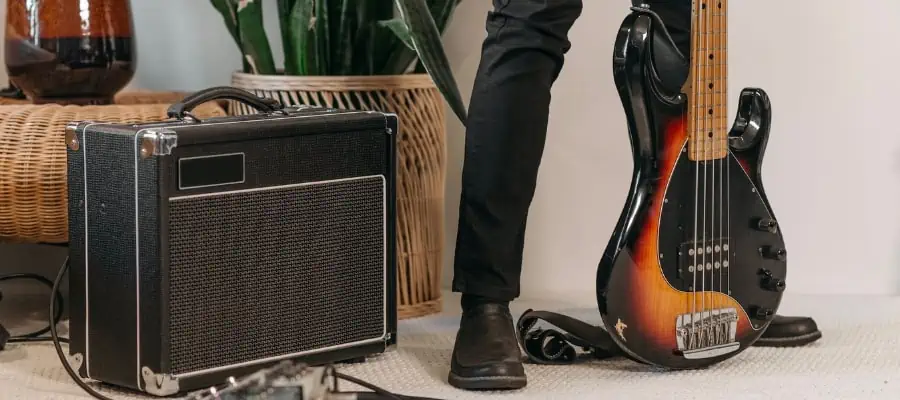
While speaker damage is unlikely in most cases, it is still not enjoyable to hear that annoying crack, pop, hum, and-or any unwanted noise in the process. So, to avoid it, you have some options.
- Turn the amp off or put it to standby mode before unplugging your guitar.
- Unplug the cable from the amp’s jack first before unplugging it from the guitar’s jack.
- Use a non-pop guitar cable.
The non-pop guitar cables come with a mute switch, which cuts the signal from the cable for seamless unplugging transitions.
Conclusion
So, in general, unplugging your guitar from an amp is pretty safe. But, for the no-risk approach, you can turn your amp off or put it to standby mode, unplug your guitar from the amp’s socked instead of the guitar’s socket, or use a non-pop cable. This way, you will avoid the unwanted high noise while taking no risks for any potential damage.
You must be more careful to protect the voice coils and tubes for tube amps. Try putting them into standby mode for a while before turning them fully on or off. Also, use the amp’s jack instead of the guitar’s jack for unplugging. And your ears and amps will be safe!
If you found this article useful, you may want to save this pin below to your Guitar board.
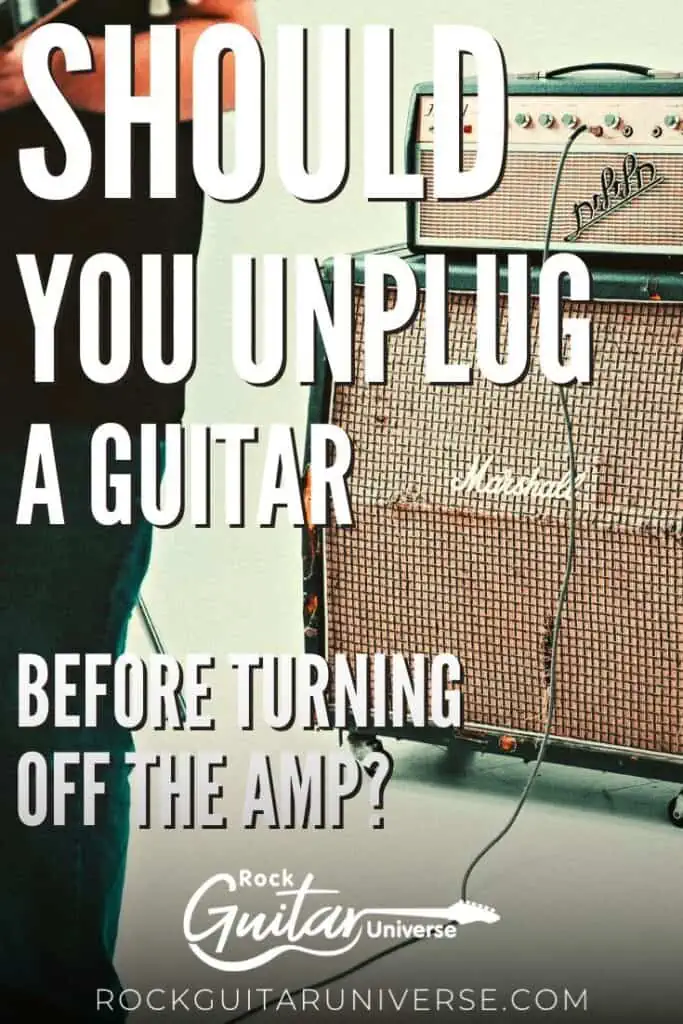
Recent Posts
Some guitarists insist on buying an expensive amplifier with their electric guitar. They assume that this is a must for every type of guitarist out there. However, in some situations, this isn’t...
Top 50 Free Realistic Guitar VST Plugins With Sound Examples
As technology has rapidly advanced in the recent decade, computers are stealing more and more roles from physical musical instruments and accessories. Nowadays, you do not need expensive amps,...

